The dishwasher has become an integral part of the modern kitchen. Less people prefer to wash the dishes manually, preferring the convenience and effectiveness of automated systems. Manufacturers began to produce available models, without sacrificing the quality of the sink.
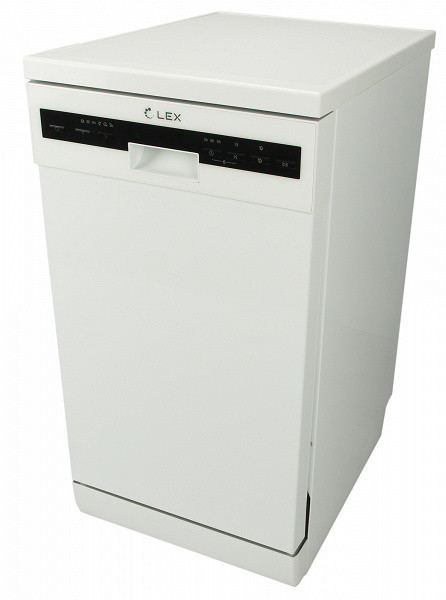
To demonstrate the principles of the dishwasher, we will choose the Lex DW 4562 WH model and conduct a number of standard tests. In the process of research, we find out whether it is possible to embed it, how it copes without a rinseum, which replaces the third basket for devices in it and whether it will be useful for those who often receive guests.
Characteristics
| Manufacturer | Lex |
|---|---|
| Model | DW 4562 WH |
| Type | freestanding narrow dishwasher |
| Country of Origin | China |
| Guarantee | 36.6 months |
| Life time * | 7 years |
| type of instalation | freestanding |
| Number of sets | 10 |
| Number of programs | 6 (normal, intensive, eco, glass, 90 minutes, fast) |
| Delayed start | 3, 6, 9 hours |
| Drying type | condensing |
| Automatic opening | No |
| Half load | No |
| Leak protection system | AquaBlock |
| Wash class | A |
| Drying class | A |
| Energy class | A++ |
| Water consumption per cycle | 9 l |
| Maximum water temperature | 70°C |
| Noise level | 47 dB |
| Weight | 31 kg |
| Dimensions (W×H×D) | 448×845×600 mm |
| Network cable length | 1.5 m |
* Contrary to popular belief, this is not the time limit after which the device will necessarily break down. However, after this period, the manufacturer ceases to bear any responsibility for its performance and has the right to refuse to repair it, even for a fee.
Equipment
We received the dishwasher in protective packaging made of cardboard and foam, supported by nylon straps. On the side of the package there was a picture of a machine loaded with dishes and open.
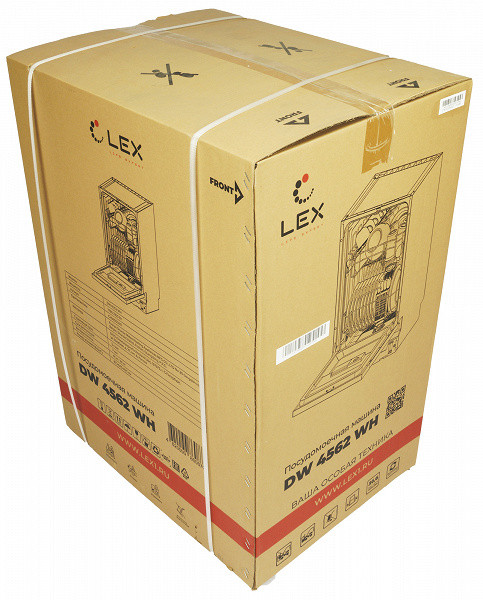
The box also contains brief technical specifications of the product, and the QR code on the front leads to the corresponding page on the manufacturer’s website. Inside the package we found:
- the dishwasher itself with installed baskets and hoses
- user guide
- warranty card
- quick start guide
- funnel for salt
- measuring spoon
- cup for liquid detergents
- energy efficiency sticker
At first sight
The body of the machine is white, traditional for large household appliances. The manufacturer's logo is placed on the hinged door, and below it we see a control panel and a niche handle.
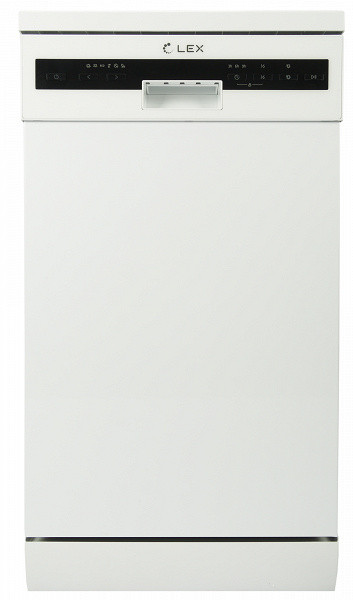
The black plastic panel occupies the entire width of the door. We will look at it in more detail when we connect the dishwasher and prepare it for the first start.

This model has two pull-out baskets. The lower one is for pots, pans, cutting boards and large tableware, the upper one is for cups, saucers and dessert plates.
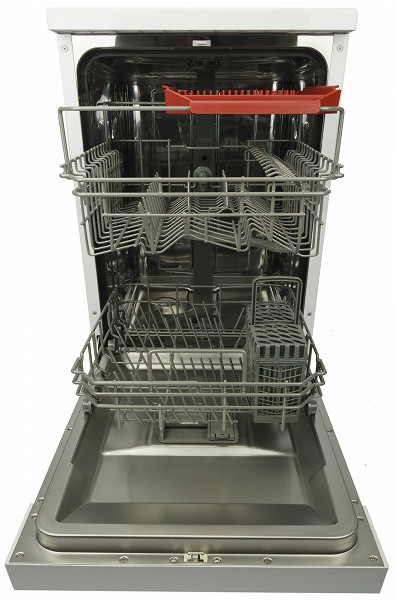
On the inside of the door there is a traditional compartment for household chemicals.
Under the sliding lid there is a niche for tablet, liquid or powder detergents, and under the hinged valve you can see the neck for filling the rinse aid.
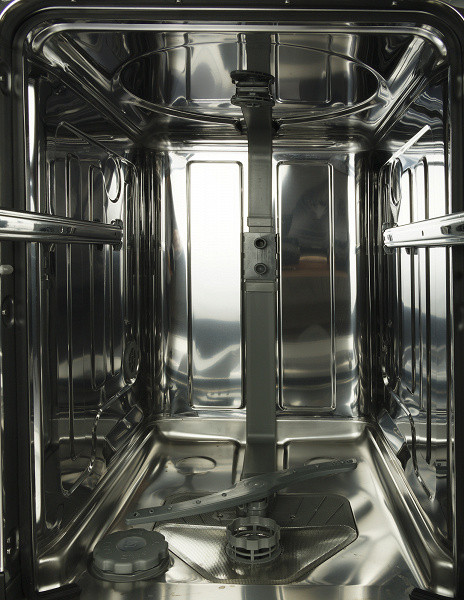
The tank of this model is completely made of stainless steel. At its bottom are the lower impeller, the neck of the salt compartment and the filter cover.

At the beginning of the filtration process, a trapezoidal metal grid is used, and then a traditional fine filter, presented in the form of a “glass” made of nylon mesh on a plastic base.
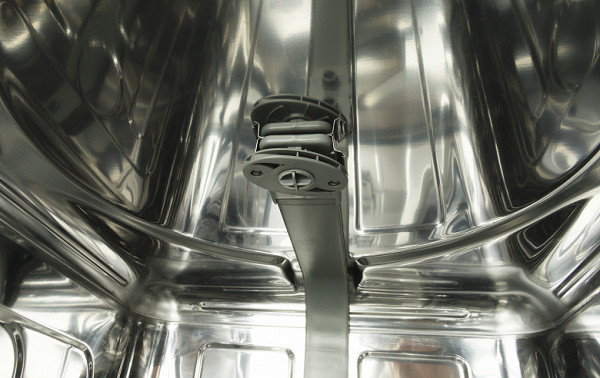
The middle sprinkler, like most PMMs, is placed on the second shelf and extends along with it. Another nozzle on the “ceiling” of the tank sprays dishes and cutlery from above.
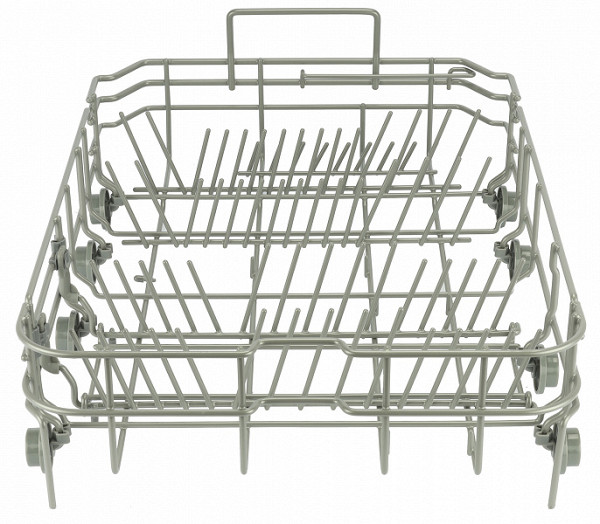
The lower basket has two rows of guides: the front one is fixed, while the rear holders can be folded. This allows large utensils such as pots, pans and large bowls to be placed in the second row. The basket is equipped with eight plastic rollers for smooth sliding along the body guides.
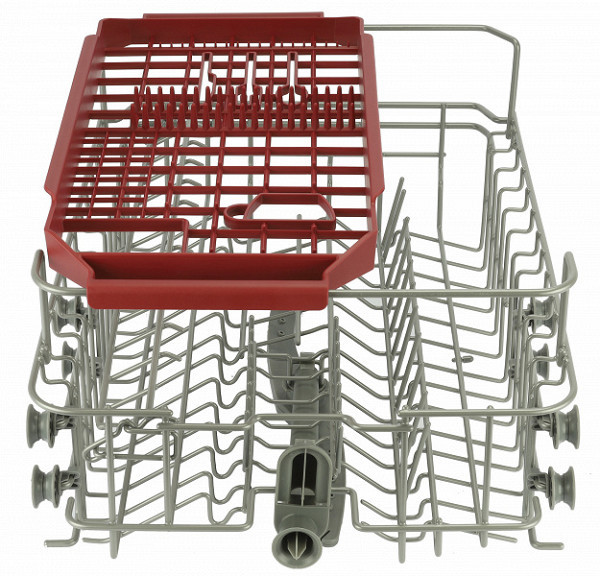
For small dishes there is a second pull-out basket. On its right side there is a folding metal shelf, and above the main container there is an additional plastic holder for cutlery and kitchen utensils. This design is an interesting alternative to the popular third racks for spoons and forks that have recently become popular. We can say that Lex DW 4562 WH has not only two, but two and a half shelves.
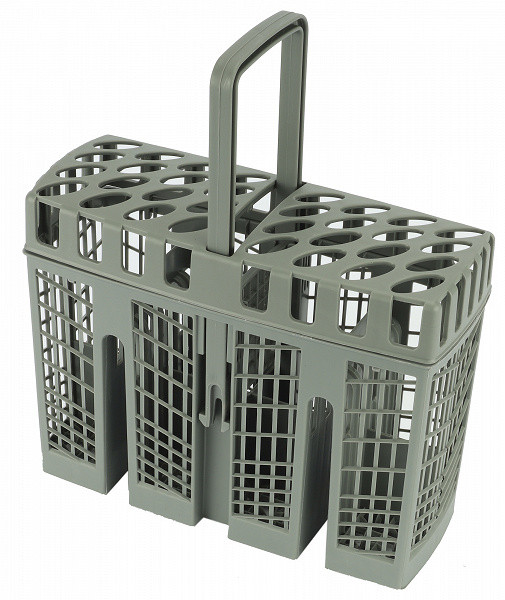
The manufacturer has also taken care for those who find it more convenient to place spoons, forks and knives from below: the dishwasher comes with a traditional cutlery basket with a removable lid and handle.
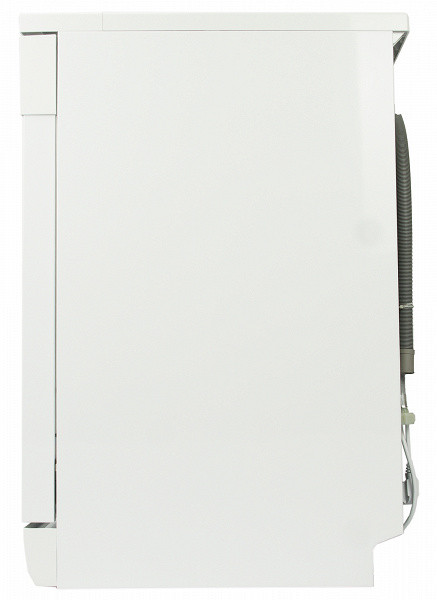
The side walls of the device are smooth, without protrusions or stiffeners. They, like the front door, are painted with white enamel.

The dishwasher comes with electrical wires and hoses pre-installed. The hoses have a traditional simple design without additional accessories. The function of protection against leaks is performed by the AquaBlock system built into the body, but if necessary, you can replace the standard fill with an accessory with an AquaStop valve.
Instructions
The User's Guide is a 52-page A5 brochure printed on thin white paper. The printing quality is average: some small drawings and diagrams are difficult to read.
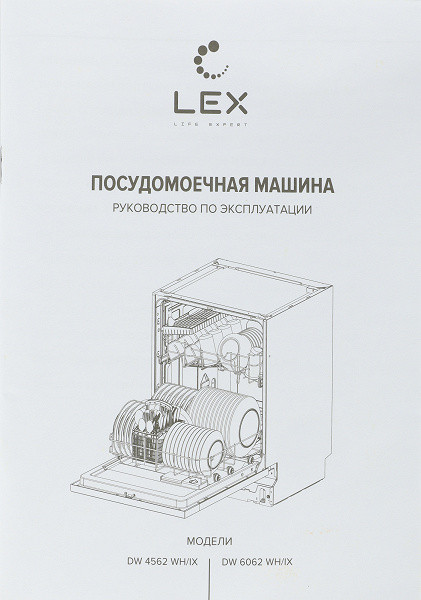
The instructions are intended for two similar Lex DW models: narrow 4562 WH/IX and wide 6062 WH/IX. They differ in dimensions and shelf design, but their controls and operating principles are the same.

The document describes in detail the process of installation, operation and proper use of the dishwasher. It contains tips for efficient dishwashing and detailed explanations of each program. The instructions end with recommendations for caring for the device and a table of possible faults with instructions for eliminating them.
Control
The control panel consists of seven mechanical buttons with a display dividing them into two groups.

The left group of buttons is responsible for selecting programs and turning them on, while the right group is for service options.
- The “Delayed Start” button allows you to delay the start of the dishwasher for 3, 6 or 9 hours.
- «Half load» reduces energy and water consumption if there are not too many dishes inside.
- “Extra Drying” increases drying time to more effectively remove moisture from dishes. Available in the «Intensive», «Normal», «Eco», «Glass» and «90 minutes» programs.
- The «Start/Pause» button starts and pauses the program.
- The child lock function is activated by long simultaneous pressing of the «Delayed start» and «Half load» buttons.
The model does not have a digital display to display the time until the end of the cycle. In the central part of the panel there are only indicators for blocking and the level of rinse aid, salt and water.
Exploitation
Although the manufacturer positions the Lex DW 4562 WH as a stand-alone dishwasher, its design allows for partial built-in. This can be done in two ways: install it between furniture modules (the height of the top cover corresponds to the standard height of the countertops of most kitchens, equal to 845 mm) or hide it under a common countertop, provided that the top cover is removed, which is secured with screws.
Connecting the unpacked dishwasher to the water supply and sewer system turned out to be simple and straightforward. Standard hoses have a simple design and there is no room for error.
Adjusting the horizontal position of the installed machine by changing the height of the front legs is also easy. We used a wrench, but you can also use pliers.
Another setting that needs to be done before starting work is choosing the water hardness and rinse aid flow rate. To do this, open the settings menu by holding the Start/Pause button for 60 seconds after turning on the dishwasher.
There are 6 water hardness levels available here: from very soft (water softener switched off) to very hard. The default is set to medium, but in our area the water is probably soft. Therefore, we set a minimum salt consumption.
By long pressing the delayed start button you can call up the rinse aid consumption menu. The default is also set to the average value (out of five). You cannot completely disable the use of rinse aid, even if you use multifunctional dishwasher tablets. There is no special mode without rinse aid, so the corresponding indicator on the display will still be active.
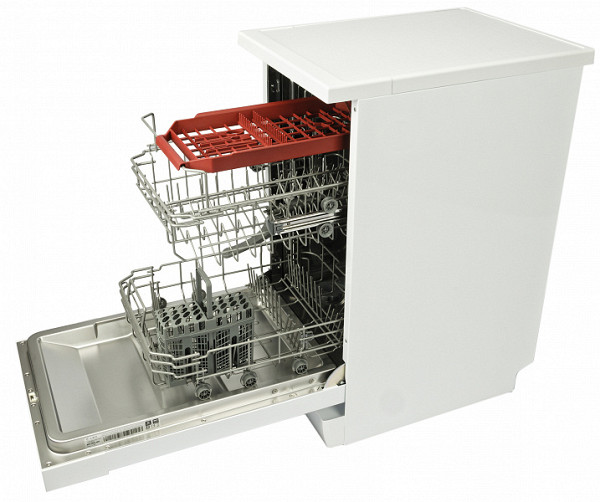
The Lex DW 4562 WH/IX dishwasher offers the following programs:
| Program | Operating time, minutes | Purpose | Description of the cycle | |
|---|---|---|---|---|
| P1 | Intensive | 165 | For moderately to heavily soiled dishes and dishes with dried-on food | Soak (50 °C) Wash (60 °C) Rinse Rinse Rinse (70 °C) Dry |
| P2 | Normal | 175 | Suitable for normally soiled dishes (pots, plates, glasses and lightly soiled pans) | Soak Wash (45 °C) Rinse Rinse (65 °C) Dry |
| P3 | Eco | 190 | Standard program optimized in terms of energy and water consumption | Soaking Wash (45°C) Rinse (65°C) Drying |
| P4 | 90 minutes | 90 | For lightly soiled dishes that do not require thorough washing | Wash (65 °C) Rinse Rinse (65 °C) Dry |
| P5 | Glass | 134 | For lightly soiled dishes and glass | Soaking Wash (45°C) Rinse (65°C) Drying |
| P6 | Fast | thirty | Fast cycle for lightly soiled dishes | Wash (45 °C) Rinse (50 °C) Rinse (50 °C) |
In addition to the standard modes (eco, normal, intensive, glass), our dishwasher has two quick programs (30 and 90 minutes), differing in duration and water temperature.
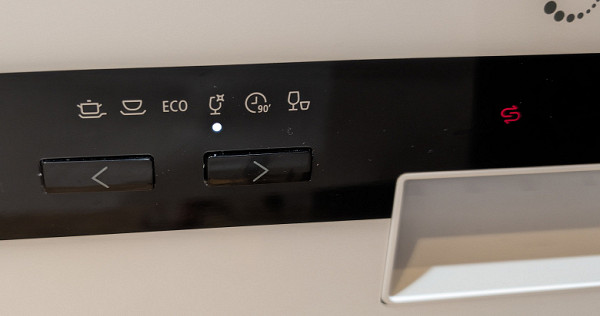
This model does not have any indication of the program progress. There is no digital display showing the time remaining in the wash, nor the “red beam” that usually projects a spot of light onto the floor in front of the running machine. The only indication that the program is still running is the blinking LED above the selected program symbol. When the cycle is complete, the dishwasher beeps and the light stops flashing.
Care
Upon completion of the washing process, following the manufacturer's recommendations, it is recommended to open the dishwasher door slightly to evaporate any remaining moisture and avoid the appearance of unpleasant odors. It is also worth checking the condition of the door seal and, if necessary, cleaning it of food residues with a damp sponge.
Do not use solvents or abrasive cleaners to clean exterior or rubber parts — only wipe with a soft cloth or sponge dampened with warm, soapy water.
To remove stains and stains from internal surfaces, it is recommended to use a cloth dampened with water and a small amount of vinegar, or a special dishwasher cleaner.
Our measurements
Information on energy consumption and water consumption is provided in the documentation. We measured the actual consumption and compared it with the figures specified by the manufacturer.
| Program | Energy consumption, kWh | Water consumption, l | ||
|---|---|---|---|---|
| stated | actual | stated | actual | |
| P1 Intensive | 1.40 | 1,087 | 16.5 | 15.6 |
| P2 Normal | 1.10 | 0.842 | 13.0 | 12.3 |
| P3 Eco | 0.74 | 0.722 | 9.0 | 9.6 |
| P4 90 minutes | 1.15 | 0.988 | 11.5 | 10.2 |
| P6 Glass | 0.81 | 0.685 | 12 | 12.6 |
| P7 Fast | 0.70 | 0.605 | 11.0 | 10.8 |
The actual energy consumption of the dishwasher turned out to be lower than stated in the manufacturer's ratings. However, water consumption corresponds to the declared data.
We measured the noise level during operation of the machine and amounted to up to 56 dBA, which is slightly higher than indicated in the technical specifications.
The maximum power observed during testing was 1886 watts. When turned off, the machine consumes 0.4 W.
Practice tests
Test operation, of course, includes regular dishwashing. But especially for this class of equipment, we have come up with several interesting tests, which we will now talk about.
P3: Eco-program and “artificial mud”
As usual, we took our ideal dirt. If you are wondering how to mix proteins, fats and carbohydrates to make it really difficult to wash this product, we recommend that you check it out.

We kept the stained plates for 24 hours so that the mixture on them would dry completely, and deliberately carelessly placed them in the lower basket.
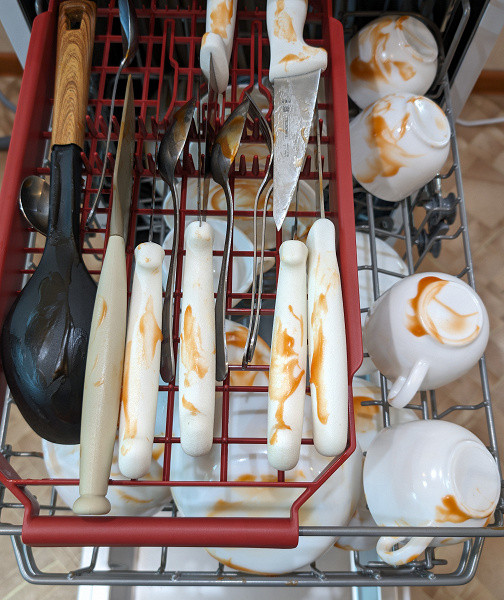
The middle one housed bowls and saucers, we put the cups on the folding shelf, and put the spatulas and kitchen knives on the top removable shelf.
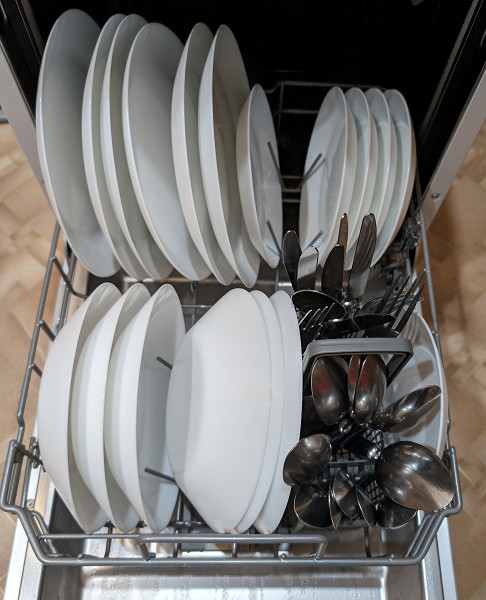
For this test we used the standard Eco program, optimized in terms of energy and water consumption.
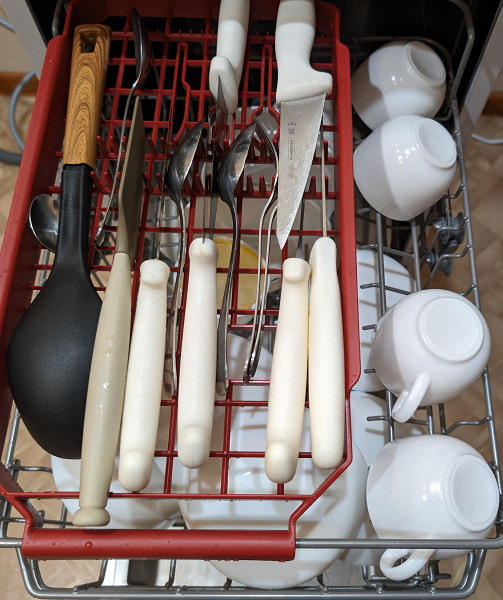
The test results were very satisfactory: the dishes in the lower and middle baskets were thoroughly washed, leaving no traces of dirt either visually or to the touch. However, some greasiness in the kitchen knives on the top rack indicates a possible “dead zone” in the top nozzle.
The drying quality was also good: not a drop of water remained on the dishes. Only the plastic parts of the kitchen utensils on the top shelf remained slightly damp, which is not uncommon for condensation drying when using plastic utensils.
Result: good
P2: Standard program and dried tomato sauce
To test the operation of the automatic program, we selected three jars: one with a volume of three liters and two with a volume of two liters. We thoroughly contaminated their inner surface with ketchup (without adding mayonnaise this time) and left them to dry for 24 hours.
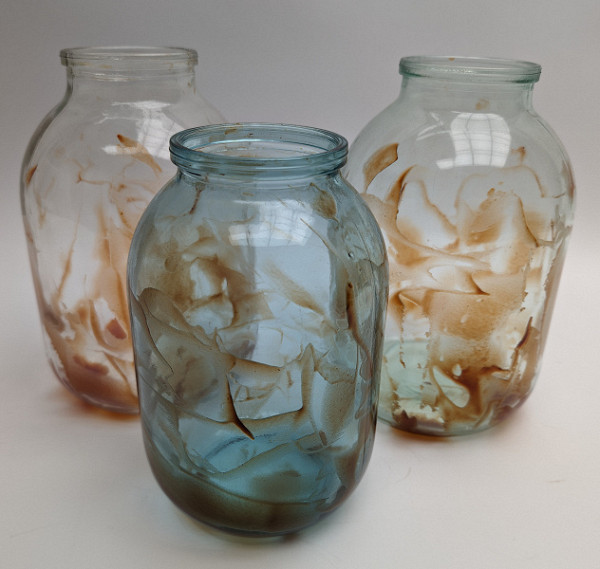
We placed the prepared containers in the lower basket, folding the back row of guides.
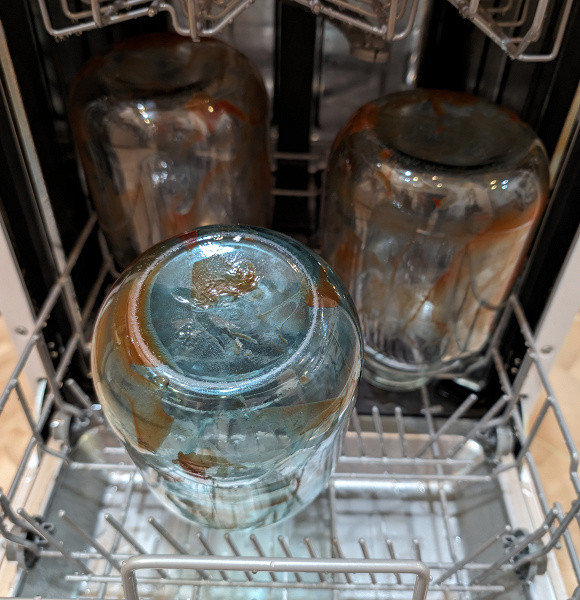
For this test, we found the “Normal” program suitable, recommended for dishes with a normal degree of soiling.
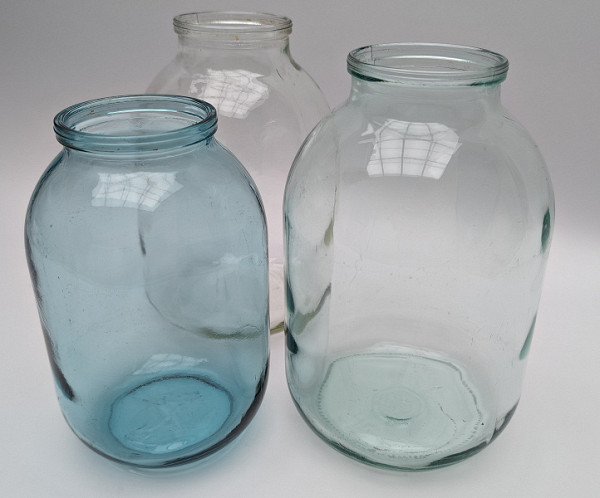
The quality of washing again pleased us: the jars were washed perfectly, we did not find any traces of tomato. However, large glass containers do not always dry completely after washing — this happened this time too.
Result: excellent
P5: Wine glasses and glassware washing script
In this test, we stain glass goblets with greasy lipstick, just like after a party. Imitating a situation where the owners went to work the next morning and returned in the evening to the need to clean everything up, we left the dishes to dry for the standard 24 hours.
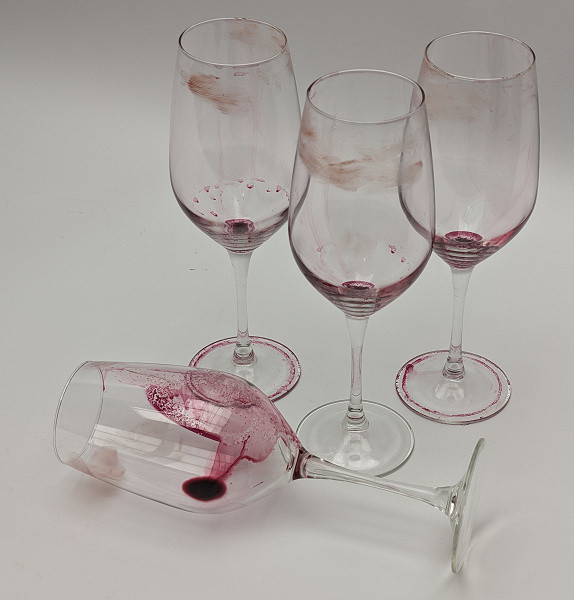
Large (600ml) wine glasses were placed at the front of the medium rack with the legs resting on the folding shelf. Two items fit perfectly, but for the third and fourth places it turned out to be not enough: the dividers for the saucers prevented them from being placed comfortably (they do not fold in this model).
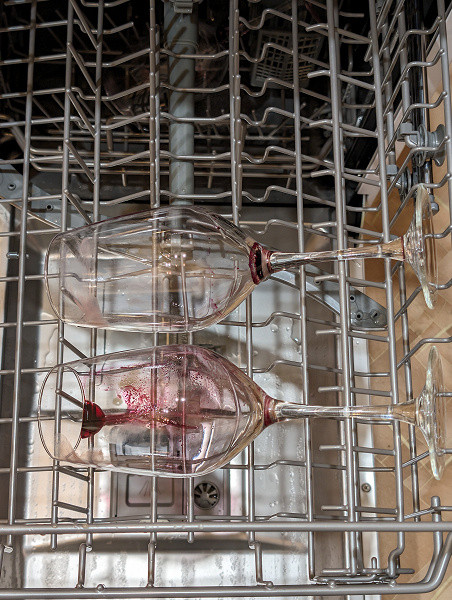
We placed the two remaining glasses on the bottom shelf, resting their stems on the cutlery basket.
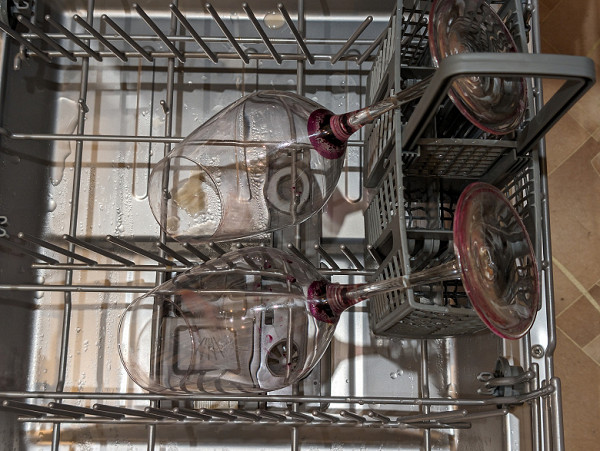
For this experiment, we, of course, chose the Glass program (P5).
This time we were completely satisfied with the quality of washing. There was not a trace of wine sediment or greasy lipstick left on the thin walls.
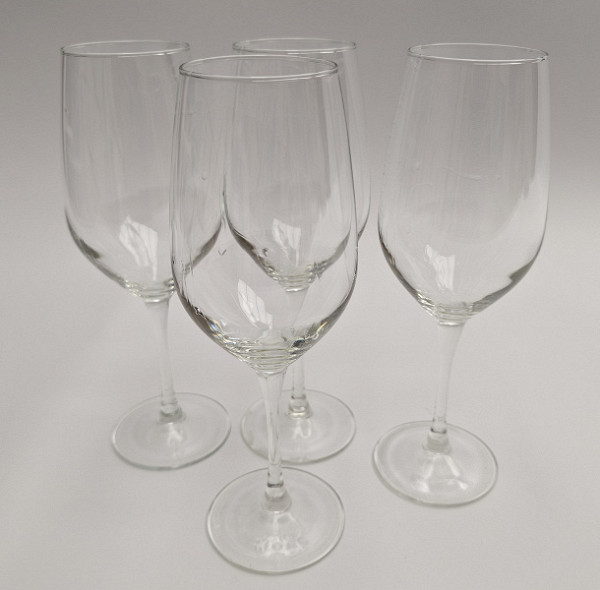
The surface of the glasses remained slightly damp, so the drying in this cycle could have been more intensive.
Result: good
P1: Intensive program and heavy pollution
To test how a dishwasher can cope with heavy soiling, we used a ceramic dish in which meat was baked in sour cream sauce. Burnt juices with fat and sour cream formed a strong crust that was difficult to wash off by hand.
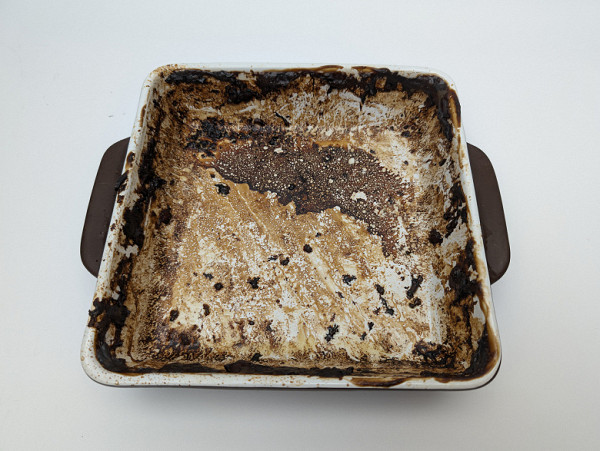
We placed the pan in the lower basket, folded the dish guides, and selected the intensive wash program (P1).
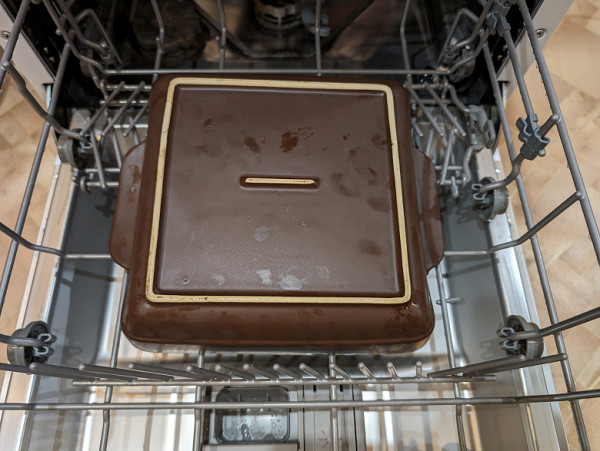
The result was completely satisfactory: the ceramic mold was washed perfectly, we did not find any traces of contamination.
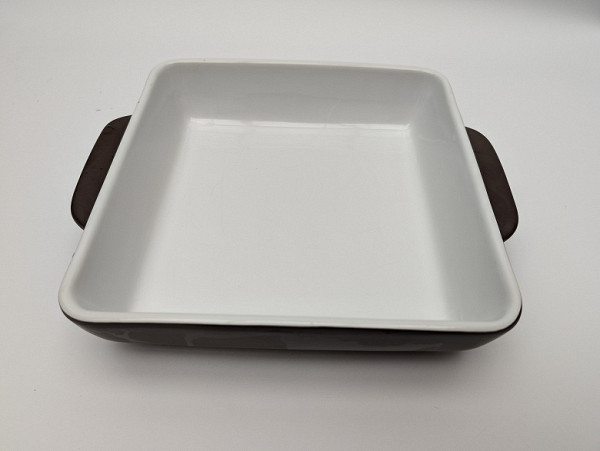
We were also satisfied with the quality of drying, although a few drops of water could be seen on the concave bottom. A relatively large volume of liquid in a container does not always have time to dry in a standard cycle.
Result: excellent
conclusions
The narrow Lex DW 4562 WH dishwasher turned out to be very similar to the older model of the Lex freestanding dishwasher line, which we reviewed recently. During practical tests, we were convinced that it also successfully copes with any task — from cleaning heavy dirt to gentle but thorough washing of fragile glass.
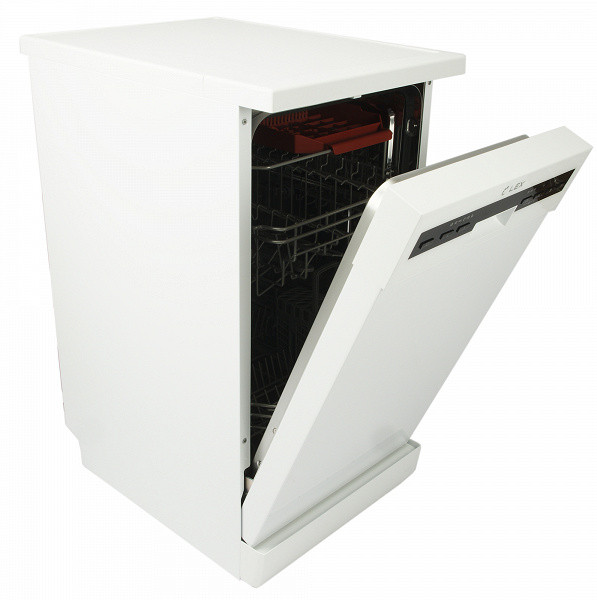
The differences between this model and the already familiar DW 4573 WH are determined by the manufacturer’s desire to reduce the price as much as possible: here we do not see such additional functions as tank illumination or an automatic dishwashing program. The full pull-out third shelf has been replaced with a removable plastic half-width one. The difference in price justifies the lack of these options, and the overall dishwashing quality was on par with the older model.
However, the savings on the digital display seem excessive: the indication of the time remaining until the end of the cycle, in our opinion, is very important. We also consider the lack of convenience of the middle basket as a design disadvantage: to be perfect, it lacks the ability to fold the rails and possibly add a second folding shelf.
Pros:
- low price
- good dishwashing efficiency
- excellent efficiency
- simple controls
Minuses:
- no indication of program execution time
- the middle shelf has little room for transformation


